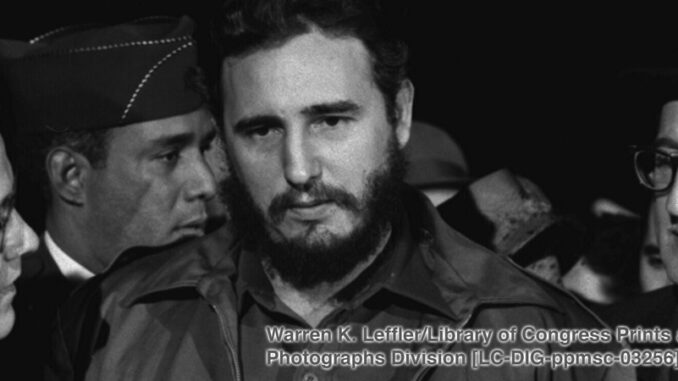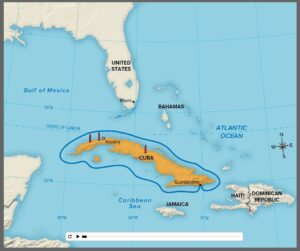

Fidel Castro, the leader of Cuba from 1959 to 2006, died last Friday. He was 90 years old. His 47-year time in office was the longest of any living national leader except for Queen Elizabeth II.
In fact, it lasted through 11 United States presidents (from Dwight Eisenhower to Barack Obama). Fidel Castro’s dictatorial legacy is both complicated and significant,. By the time the Cuban revolutionary strong man stepped down as state leader in 2006, the majority of Cubans under his rule had never known any other leader.
Early History
Born Fidel Alejandro Castro Ruz on August 13, 1926 in the eastern Cuban province of Oriente, Castro was a revolutionary in college and led a rebellion against the corrupt Batista government in 1953. He was sentenced to 15 years in prison, but was released just one year later and exiled to Mexico, where he began to plot his return to Cuba to overthrow Batista’s government. In 1956, Castro and eighty other “freedom fighters,” including Che Guevara, arrived once again on the coast of Cuba.
On New Year’s Day 1959, Batista stepped down as Castro seized power. Initially, Castro proposed democratic reforms and won great support all over the world, including from the United States. Early on in his rule, however, it became clear that Castro did not view himself as a democratic leader after all. Within a few months, he had executed more than 500 of Batista’s former government officials. He named revolutionaries such as Che Guevara to his cabinet. And in May, Castro began seizing private agricultural land and declared himself a Communist, prompting the United States to break off diplomatic relations in 1961.
A Mixed Legacy
In the years that followed, opposition efforts by the Cuban people were crushed by Castro’s army. Close to a million refugees fled to the United States. A U.S.-led attempt to overthrow Castro–known as the Bay of Pigs invasion–failed as well.

As Castro began to align himself with the Soviet Union, tensions between Cuba and the United States worsened. In October 1962, U.S. spy planes took photos of Soviet nuclear missiles in Cuba–only 90 miles from the coast of Florida. The American people waited tensely for 13 days that became known later as the Cuban missile crisis, before the Soviets finally agreed to remove the missiles.
Though Castro did not succeed in establishing a pure Communist state in Cuba, he managed to centralize the economy; eliminate much of the traditional hierarchical social structure; lessen segregation; and improve education and health care for many Cubans. On the other hand, he also deprived the Cuban people of basic human rights such as free speech and the opportunity for personal economic growth; imprisoned dissidents and homosexuals; and controlled all access to goods and information, including the Internet.
In 2006, Fidel Castro was hospitalized with a serious illness called diverticulitis and passed much of his power to his younger brother, Raul Castro. Raul opened up the Cuban economy: he eased travel restrictions, allowed access to cell phones and other modern communications technology, and permitted the Cuban people to buy and sell property. President Obama responded by beginning a new dialogue to change the decades-long conflicts between the United States and Cuba. In 2016, President Obama made a diplomatic visit to Cuba: the first visit by an American president in 88 years, and a symbol of improving relations between the two countries.
What This Means for the U.S.

Many see Fidel Castro’s death as further opening up the possibility of democratic change in Cuba. Even though Raul Castro has been in power for ten years, Fidel Castro has always had a voice in his younger brother’s leadership, which held back many reform efforts. His death, therefore, could provide an opportunity to further reform the country and restore the relationship between Cuba and the U.S.
Much of the work of re-opening diplomatic relations between the two nations has already been set into motion by President Obama and Raul Castro over the past two years. However, President-elect Trump has already indicated that he may reverse this diplomatic progress unless Cuba agrees to certain concessions, such as freeing political prisoners, opening economic markets, and allowing religious freedom.
